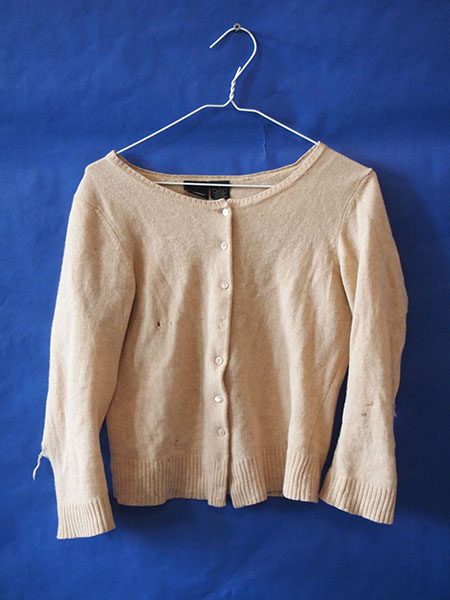![]() body | color | collections | commodity | cube | document | fabric | fetish | gender | glass | home | identity | living | machine | metal | minimal | mobility | narrative | olfactory | organic |
body | color | collections | commodity | cube | document | fabric | fetish | gender | glass | home | identity | living | machine | metal | minimal | mobility | narrative | olfactory | organic |
![]() pain | paper | plastic | plugs | power | protective | rectangular | ritual | round | sound | souvenir | spiritual | style | text-based | time | tool | touch | uniform | value | visual | warm | wood
pain | paper | plastic | plugs | power | protective | rectangular | ritual | round | sound | souvenir | spiritual | style | text-based | time | tool | touch | uniform | value | visual | warm | wood
| Clothing: Beige Button-up Sweater | |||
Narrative: Mossimo This was my favorite sweater for a long time, I would wear it over anything. I don't remember exactly who I acquired it from, either Marguerite Day or another friend who was giving it away. China has become the largest producer of raw cashmere and their clip is estimated at 10,000 metric tons per year (in hair). Mongolia produces somewhat more than 3,000 tons (2,721 tonnes) (in hair), while Afghanistan, Iran, Turkey, and other Central Asian Republics produce significant but lesser amounts. The annual world clip is estimated to be between 15,000 and 20,000 tons (13,605 and 18,140 tonnes) (in hair). "Pure cashmere", resulting from removing animal grease, dirt and coarse hairs from the fleece, is estimated at about 6,500 tons (5,895 tonnes). It is estimated that on average yearly production per goat is 150 grams (about 1/3 lb). Pure cashmere can be dyed and spun into yarns and knitted into jumpers (sweaters), hats, gloves, socks and other clothing, or woven into fabrics then cut and assembled into garments such as outer coats, jackets, trousers (pants), pajamas, scarves, blankets, and other items. Fabric and garment producers in Scotland, Italy, and Japan have long been known as market leaders.
|
 |
||
![]()
